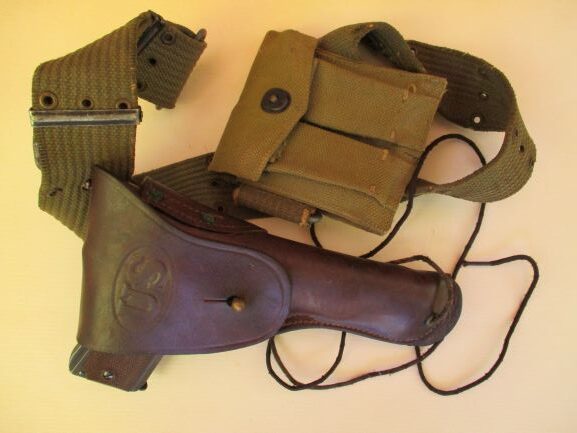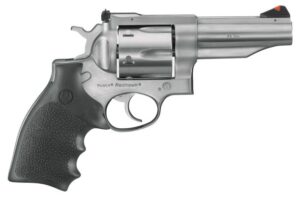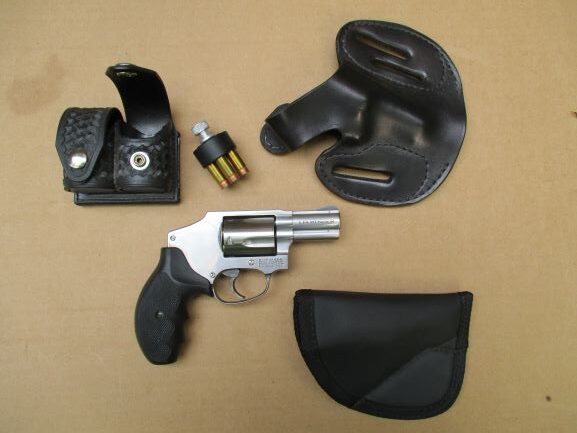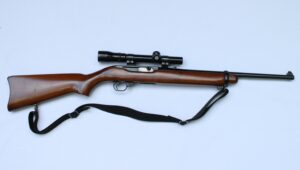
By Jim Dickson
Contributing Editor
Just a few decades ago nothing seemed as safe and innocent as going fishing. Times have changed though.
If you have something thieves want and they think that they can get away with taking it then why not take it? My wife, Betty and I had to forsake a very remote fishing hole in a river where we could always depend on catching big fish because drug dealers started coming to that wildlife management area. As the battle between the drug dealers and the law enforcement heated up, that area quickly became the last place you wanted to be fishing.
Boating may look perfectly safe but not all boaters are out for recreation. I had friends who had lakefront property and everyone on the lakefront was plagued by burglars that came and left by boat. They could land and loot and be gone long before the law could respond. The homeowners took to forming posses for rapid response to this threat just like the frontiersmen banding together against Indian raids. I remember one boatload of these thugs getting their boat sunk by an irate homeowner with a deer rifle.
We used to let our small children run and play freely. Now we watch over them like a hawk.

Basically we are not living in the 1950’s anymore and it behooves us to pack a pistol when fishing in the 21st Century.
Then there is the animal threat. Domestic dogs gone wild running in packs were a major problem in my home state of Georgia in the 1960’s with almost every game warden having a story about how he shot up a pack that abandoned chasing a deer to attack him. Even tame dogs can be very vicious to strangers. Everyone has encountered a big vicious dog at some point. Out in the wild there is no one to call them off and the pack mentality is simply to kill the prey, which may mean you.
We did not have the enormous population of wild hogs in previous decades that we do now in many areas. Yes, they normally will run from you but it is not uncommon for them to run after you either. I have seen them chase people and tree folks. In Texas a family group of wild hogs knocked down Christine Rollins and killed her. The Sheriff told me it was the worst thing he had ever seen when he was called out there.
Most folks don’t fish around bears and most bears East of the Mississippi are benign but there have been plenty of bear attacks in the U.S. from both grizzly and black bears. Some of these bears also ate their victims.
In Alaska and British Columbia, we’ve had instances of both black and grizzly bears as confirmed man-eaters and this is a current threat, not ancient history. The Alaskan Department of Fish& Game has repeatedly warned against playing dead if attacked.
Here are some tips from the ADF&G website:
Encountering a defensive bear
A bear that you surprise or crowd, especially one with cubs or on a carcass, may feel threatened. The bear may be agitated, and may huff, stomp, make a popping sound with its teeth, salivate or lay its ears back against its head and charge. Your goal in a defensive encounter is to calm the bear — and yourself — and let the bear know you are not a threat.
- If you have time to respond, stand your ground, ready your deterrent, group up, talk to the bear in a calm voice and watch the bear. Do not run.
- If the bear is stationary, move away slowly while keeping your eyes on the bear.
- If the bear starts to move toward you or charges, stop and stand your ground.
- Let the bear know you are not a threat. Behaving calmly, moving slowly, and speaking in a low calm voice will help de-escalate the situation.
- If the bear continues to approach, use your deterrent when the bear is within range.
- Cubs and kill sites — Do not stand your ground at an occupied kill site or between a sow and her cubs. Instead, back away and leave the area immediately.
How to react in a defensive bear attack
An attack means that a bear has made physical contact with you. Understand that defensive bear attacks can occur so quickly that there is little time to respond. A majority of bear attacks are considered defensive. Although black and brown bears may react defensively, black bears rarely attack defensively. When they do, it often involves mother black bears defending their cubs. Most defensive attacks are from brown bears.
- If a defensive bear makes contact with you and knocks you to the ground, lie face down and clasp your hands behind your neck. Protect your neck, stomach and face. Spread your legs and elbows for stability so the bear cannot roll you over. Leave your backpack on for protection. Your goal is to have the bear no longer perceive you as a threat.
- Do not struggle or make any noise until you are certain the bear has left. This may seem like an eternity, but you cannot risk being re-attacked. Even if it is departing, the bear could look back at you to see if the perceived danger is still active.
- If the attack is prolonged and the bear starts feeding on you, it may no longer be considered defensive but may have turned into a predatory attack. In this case, fight back.
Encountering a non-defensive bear
Bears that are not feeling threatened may approach you for a variety of reasons. You may be on the bear’s travel route, it may be curious, testing dominance, food-conditioned, habituated, or potentially predatory. Your goal in a non-defensive encounter is to let the bear know you are human, and that you will become more assertive as the bear persists.
- Your initial response to all bear encounters should be the same: Stand your ground, ready your deterrent, group up and watch the bear. Stay calm and talk to the bear in a firm voice.
- Do not play dead! If you panic, run or play dead with a non-defensive bear, you risk the encounter turning into a predatory attack.
- If you’re on the bear’s route, you may be blocking it. If this is the case, try to move out of its way while keeping an eye on the bear.
- If the bear persistently approaches, follows you and stays focused on you; it’s time to assert your dominance and become aggressive. Stand your ground and don’t retreat; shout, make yourself appear large, let the bear know you will fight, use any non-lethal deterrent such as bear spray, or throw rocks or sticks. Drive the bear off.
- There isn’t any hard and fast rule regarding when to shoot a persistent and aggressive bear, it’s a personal decision. If you do use a firearm, shoot at close range and aim to kill the bear.
If the threat level is high, then a Model 1911 pistol with spare loaded magazines in a G.I. Pouch is a good tool to have. This applies to either man or beast threats. Use FMJ ammo so you have enough penetration on big animals or cover that human attackers may employ. Hollowpoints are fine for hunting where you can choose your shots but it is better to have a big enough caliber that will work with solids for any kind of defense work as you don’t know what you are going to be shooting and under what conditions. If you have children to protect with you this is the gun you should pack.
A pancake holster will enable you to carry discretely as it can be hidden under just a shirt if need be. It absolutely does not interfere with casting, reeling in, or any fishing activity.
For purely open carry the G.I. M1916 holster is best, in my opinion. The leather tie down thongs rot in use and break so I substitute nylon shoe laces. You have to have this holster tied down to do a fast draw. Simply flip the flap up with your thumb and beginning with your little finger start wrapping your fingers around the cocked-and-locked pistol as you draw it from the holster. Midway between the holster and the target wipe the safety off with your thumb. While it may not fit the popular image of a fast draw, I don’t believe any holster is faster from which to draw than a tied down M1916 holster for the M1911A1.
A Model 1911 with FMJ ammo is more than capable of dealing with any bear or wild hog. When my wife and I were living in a remote trapper’s log cabin deep in the Alaskan interior we used G.I. M1911A1’s with military surplus ammo for everything with complete success. Ranges are short in the interior of Alaska. They don’t call it the Alaskan bush country for nothing. While I know of two grizzly bears killed with Luger pistols I feel safer with a .45.
The speed with which a .45 semi-auto pistol can be fired and the ability to do fast reloads from the magazines in the belt pouch are critical if you face a herd of wild hogs or wild dogs. You can easily have more targets than you have cartridges in your gun and the herd is not always deterred by taking out some of its members. Sometimes that will stop the charge and sometimes they keep coming. If you have a heavy recoiling magnum you may not have time to shoot them all before they reach you.
Some folks prefer a revolver and the .45 Colt SAA is certainly one of the easiest guns to use. The standard velocity solid lead loads work well on everything. Because it lacks a rebounding hammer or a firing pin block it must be carried with the hammer down on an empty chamber and it is also painfully slow to reload. If your circumstances will safely allow for these facts it works splendidly.
For those wanting a double action revolver I know of no finer example than the 4-inch Ruger Redhawk revolver chambered for the .45 Colt. Its superb trigger pull enables anyone to quickly master double action shooting and it can be reloaded with H.K.S. Speedloaders.

I have also seen the M1917 Colt and S&W .45 revolvers used for bear protection. They work just fine as did the .455 Webley revolvers that were converted to .45 ACP.
American Derringer Corp. offers a stainless steel .45 Colt/.410 double Derringer that makes a very good backup gun. In relatively safe areas it may be all you need. This gun will also chamber the 2 ½- inch .410 flechette cartridges holding 7 flechettes made by Sabot Designs LLC. While this is a close range gun it is highly concealable and won’t weight you down if you fall in the water.
A simple basic holster is all you need for one of these small handguns. Do not use a belt clip to attach the holster for this gun to a belt though. If you are carrying in front of your hip the muzzle of the gun will press against you when you bend over and the gun and holster will immediately be forced up and over the belt to fall on the ground.

A longtime favorite of many fishermen is the stainless steel hammerless S&W snub nose .38/.357 Magnum five-shot revolver. It is another lightweight that is readily concealable and won’t weigh you down if you fall in and have to swim. H.K.S. makes five-shot speedloaders for this gun as well as a waterproof imitation leather carrier that holds two of their speedloaders. I do not consider this caliber suitable for bear and wild hogs although it will kill them.
A pancake holster for this gun must have the thumb break safety strap go over the trigger guard as there is no exposed hammer. For IWB carry the Stickey Holsters work best as they are very secure and do not change position as you move about.
Some people like a pump shotgun with a pistol grip instead of a stock for protection. Personally I don’t like them as they are harder to hit with than a shotgun with a stock and I don’t find them significantly smaller or easier to carry than a conventionally stocked shotgun.
Any long gun is going to be slower to bring into action than a handgun unless you are already holding it ready to fire. A handgun on the hip is not threatening until it is drawn and it can be drawn in the blink of an eye. A rifle or shotgun being picked up and readied for action is threatening as well as slow yet if you leave it lying a few feet away, you may not be able to deploy it in time to help you.
I noticed a lot of folks in Alaska had semi-auto Ruger .44 Magnum carbines when they were salmon fishing. The military surplus M1 carbine is also handy little problem solver.


Where you have the big bears, a good pump 12-gauge shotgun stoked with German Brenneke slugs will take the biggest grizzly down with authority. This is what many of the Alaskan state troopers and wildlife officers use on problem bears.
A Mossberg 500 riot gun with extended magazine with rifle sights is about as perfect a factory shotgun solution as you can get. Any rifle carried for protection should be a semi-auto as a manually operated rifle is often too slow for close range defense against more than one threat. After an Alaskan school teacher was killed by wolves, we have to add wolves to the threat list and everyone knows they run in packs. If you are forced to take on a determined wolf pack at close range with a bolt action rifle, you better be really skilled at using it. This also applies to a determined wild dog pack attacking you.
A firearm carried in the wilds must be up to the threat level that you face and should be capable of discrete carry. Life in the outdoors is no longer the safe escape from modern day cares and worries that it once was. That’s just one more reason that more and more people are now carrying guns.



